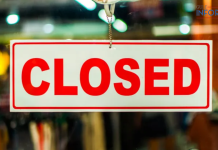By late June, more than half the slum’s population had been screened for symptoms
When coronavirus claimed its first victim in India’s largest slum in April, many feared the disease would turn its narrow, congested streets into a graveyard, with social distancing or contact tracing all but impossible. But three months on, Mumbai’s Dharavi offers a rare glimmer of hope with new infections shrinking, thanks to an aggressive strategy that focused on “chasing the virus, instead of waiting for disaster”, according to city official Kiran Dighavkar.
The sprawling slum has long been a byword for the financial capital’s bitter income disparities – with Dharavi’s estimated one million people scraping a living as factory workers or maids and chauffeurs to Mumbai’s well-heeled residents. | Above: Medical staff wearing Personal Protective Equipment (PPE) gear takes temperature reading of a man as they conduct a door-to-door medical screening inside Dharavi slums to fight against the spread of the COVID-19 coronavirus, in Mumbai on June 24, 2020.
With a dozen people typically sleeping in a single room, and hundreds using the same public toilet, authorities realised early that standard practices would be of little use. “Social distancing was never a possibility, home isolation was never an option, and contact tracing was a huge problem with so many people using the same toilet,” Dighavkar told AFP
An initial plan to conduct door-to-door screenings was abandoned after Mumbai’s searing heat and humidity left medical workers feeling suffocated under layers of protective equipment as they combed the area’s cramped alleys for cases. | Above: A pregnant woman (C) is assisted by her relatives as they walk into a COVID-19 coronavirus private testing centre to get tested in Mumbai on June 29, 2020.
But, with infections rising fast and fewer than 50,000 people checked for symptoms, officials needed to move quickly and get creative. What they came up with was coined “Mission Dharavi”. | Above: A health worker takes a swab test of a woman during a free medical checkup in Dharavi,
Also Read: Suffer from a critical illness? Register with Dubai Police for faster emergency response.
A health worker wearing PPE suit checks the oxygen level of a resident, in Dharavi on Sunday.
Each day, medical workers set up a “fever camp” in a different part of the slum, so residents could be screened for symptoms and tested for coronavirus if needed. Schools, wedding halls and sports complexes were repurposed as quarantine facilities that offered free meals, vitamins and “laughter yoga” sessions.
Strict containment measures were deployed in virus hotspots that were home to 125,000 people, including the use of drones to monitor their movements and alert police, while a huge army of volunteers swung into action, distributing rations so they didn’t go hungry.
Bollywood stars and business tycoons paid for medical equipment as construction workers built a 200-bed field hospital at breakneck speed in a park inside Dharavi. By late June, more than half the slum’s population had been screened for symptoms and around 12,000 tested for coronavirus. So far Dharavi has reported just 82 deaths – a fraction of Mumbai’s more than 4,500 fatalities. | Above: Health workers remove personal protective equipment after completing screening of residents for COVID-19 symptoms at Dharavi, one of Asia’s biggest slums, in Mumbai, India, Wednesday, June 24, 2020.
Municipal worker splash disinfectant in tightly occupied streets amid the COVID-19 pandemic at Dharavi in Mumbai on Monday.
We are on the brink of victory, I feel very proud,” said Abhay Taware, a doctor who saw around 100 patients daily in his tiny clinic at the height of the crisis. The 44-year-old father-of-two also had to fight his own battle against coronavirus when he contracted the disease in April, but told AFP he had “no doubts” about returning to work. “I thought I could show my patients that a positive diagnosis does not mean the end,” he said.
Although doctors like Taware worked to reassure worried residents, the stigma persists. After an isolating 25-day spell in hospital and a fortnight in quarantine, Sushil – not his real name – said he now feared discrimination if people found out about his diagnosis. The 24-year-old also struck a note of caution, warning of a potential resurgence in infections. “People need to take as many precautions as possible. The numbers might have come down but they can swiftly rise again”, he told AFP. | Above: A health worker urges residents to attend a free medical checkup camp at Dharavi,
With Mumbai and Delhi struggling to accommodate coronavirus patients as India’s cases surge past half a million officials are also wary of celebrating too soon. “It’s a war. Everything is dynamic,” said Dighavkar. “Right now, we feel like we are on top of the situation,” he said. “The challenge will be when factories reopen,” he added, referring to the billion-dollar leather and recycling industries run out of Dharavi’s cramped tenements. And some in the slum fear their community might not be as lucky next time. | Above: Health workers rest as they screen people for COVID-19 symptoms at Dharavi, one of Asia’s biggest slums, in Mumbai, India, Wednesday, June 24, 2020.




